
Enos Edward "Yakima" Canutt was an American champion rodeo rider, actor, stuntman, and action director. He developed many stunts for films and the techniques and technology to protect stuntmen in performing them.

Lane Chandler was an American actor specializing mainly in Westerns.
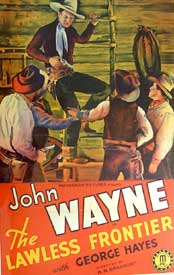
The Lawless Frontier is a 1934 American Monogram Western film directed by Robert N. Bradbury and starring John Wayne, Sheila Terry, George "Gabby" Hayes, and Earl Dwire. It was the tenth of the Lone Star westerns. The picture was made on a budget of $11,000, shot in less than a week at Red Rock Canyon north of Los Angeles, and released by Monogram on Nov. 22, 1934. The film remains an unusual showcase for Earl Dwire in the lead villain's role.

John Hartford Hoxie was an American rodeo performer and motion-picture actor whose career was most prominent in the silent film era of the 1910s through the 1930s. Hoxie is best recalled for his roles in Westerns and rarely strayed from the genre.
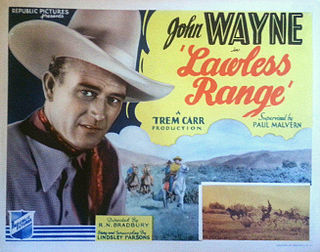
Lawless Range is a 1935 American Western film released by Republic Pictures, directed by Robert N. Bradbury and starring John Wayne. He appears as a "singing cowboy" in the film, with his singing voice dubbed by Glenn Strange, who later found lasting film fame himself as Frankenstein's Monster.
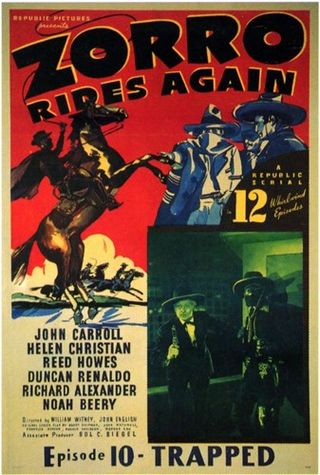
Zorro Rides Again (1937) is a 12-chapter Republic Pictures film serial. It was the eighth of the sixty-six Republic serials, the third with a Western theme and the last produced in 1937. The serial was directed by William Witney & John English in their first collaboration. The serial starred John Carroll who also sang the title song as a modern descendant of the original Zorro with Carroll stunt doubled by Yakima Canutt. The plot is a fairly standard western storyline about a villain attempting to illicitly take valuable land. The setting is a hybrid of modern (1930s) and western elements that was used occasionally in B-Westerns. It was also the first in a series of five Zorro serials, followed by Zorro's Fighting Legion (1939), Zorro's Black Whip (1944), Son of Zorro (1947) and Ghost of Zorro (1949).
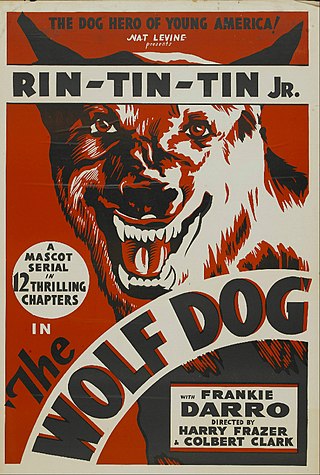
The Wolf Dog is a 1933 American Pre-Code Mascot film serial directed by Colbert Clark and Harry L. Fraser and starring Frankie Darro and Rin Tin Tin, Jr. The plot concerns a young boy becoming the heir to a fortune and a villain attempting to take it from him. The boy's canine pet, Rin Tin Tin Jr., is the star of the film, protecting his master from a succession of murder attempts.

King of the Pecos is a 1936 American Western film directed by Joseph Kane and starring John Wayne and Muriel Evans.
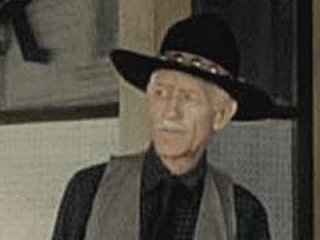
Earl Dwire, born Earl Dean Dwire, was an American character actor who appeared in more than 150 movies between 1921 and his death in 1940.

J. Frank Glendon was an American film actor. He appeared in more than 70 films between 1915 and 1936. He was born in Choteau, Montana, and died in Hollywood, California.

Clifford William Lyons was an American film actor, stuntman and second unit director, primarily of Westerns and particularly the films of John Ford and John Wayne. His Hollywood contemporaries were unanimous in describing him as “a driven taskmaster”.

The Kid from Spain is a 1932 American pre-Code black-and-white musical comedy film directed by Leo McCarey. Harry Ruby and Bert Kalmar composed the songs, and Busby Berkeley is credited with creating and directing the film's musical scenes. It was Jane Wyman's film debut.

The Lawless Rider is a 1954 American black-and-white western film directed by Yakima Canutt and starring Johnny Carpenter, Frankie Darro and Noel Neill, and marketed by United Artists. Ed Wood helped co-write the screenplay, which was originally to be titled The Outlaw Marshall. The film was shot in 1952 but was not released until July 1954 due to cost overruns and legal difficulties.

Gordon De Main was an American film actor. He was leading man for the New York–based Excelsior company in the early 1910s, and was later a supporting actor in many films, particularly Westerns.
Edward Clay "Tap" Canutt was an American stunt performer and actor who worked on over 40 films between 1950 and 1980. He was the eldest son of legendary stuntman and rodeo champion Yakima Canutt. He was also the brother of Joseph Canutt.

Julian Rivero was an American actor whose career spanned seven decades. He made his film debut in the 1923 silent melodrama, The Bright Shawl, which starred Richard Barthelmess, Dorothy Gish, William Powell, Mary Astor, and Edward G. Robinson. Over the next 50 years, Rivero would appear in well over 200 films and television shows.

Lightning Bryce is a 1919-1920 American Western film serial directed by Paul Hurst and starring Ann Little and Jack Hoxie. In all, 15 episodes were produced; all episodes survive today and are in the public domain.
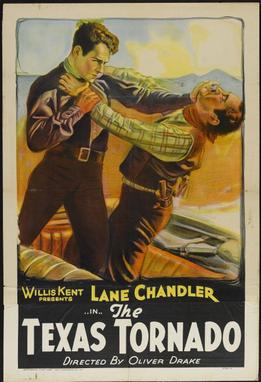
The Texas Tornado is a 1932 pre-Code American Western film directed by Oliver Drake and starring Lane Chandler, Doris Hill and Ben Corbett.

The Cheyenne Cyclone is a 1931 American Western film directed by Armand Schaefer and starring Lane Chandler, Marie Quillan and Frankie Darro. It is a remake of the 1928 silent film Phantom of the Range.
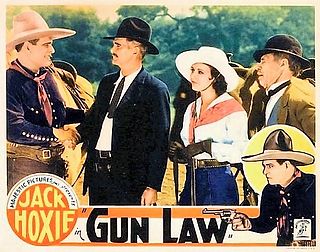
Gun Law is a 1933 American pre-Code Western film directed by Lewis D. Collins and starring Jack Hoxie, Betty Boyd and Mary Carr. It was remade in 1937 as Melody of the Plains.



















